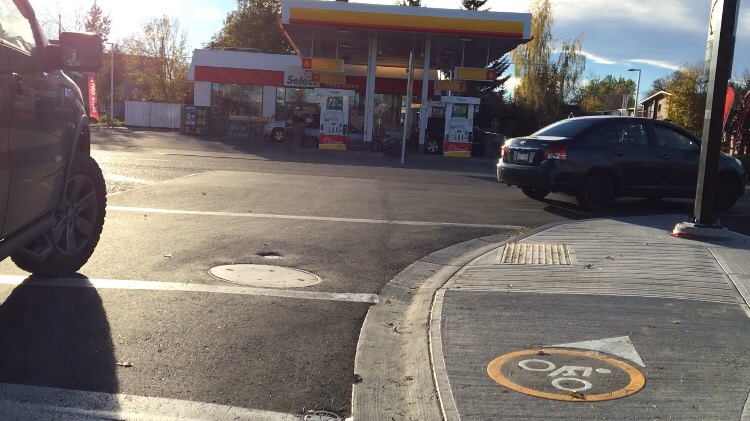A few weeks ago, I criticized cities for failing to build sensible connections between existing bike lanes.
Then I rolled over a relatively new piece of bike infrastructure in my city, and had a bit of a moment. “There,” I thought. “That wasn’t so hard, was it?”
Here’s that new piece of infrastructure.
https://www.instagram.com/p/BK2ClNDAamW/
(Just a little shout out to the dude in the video driving that black pickup truck who hogs the intersection and then accelerates needlessly fast — thanks for re-asserting your dominance of the roads in such a subtle way).
This may not look like much, but this intersection has some history. Back in 2011, the addition of a painted bike lane on one of the streets of this intersection prompted one of the city’s first bike boxes.
The problem was, it was a weird-ass bike box. It was oddly placed, few people understood how to use it, and fewer still actually used it. For several years, city workers gamely tried to “educate” people on proper use of the bike box, but even after watching the video and practicing, I was still a little baffled.
https://www.youtube.com/watch?v=8rqK2uwvnRA
Eventually, the city threw in the towel, and sent some poor road worker to scrape the green paint off the road.
Now, a few years later, a new bike lane on the intersecting road prompted another attempt. This time, a new tactic has been tried, whereby cyclists are directed from the street onto a short shared pathway before being returned to the road.
This thing isn’t perfect. It’s still a little odd, and putting cyclists onto what is basically the sidewalk is a little counter-intuitive, especially when there are a lot of pedestrians.

But if you take a broader look at this, there’s a lot to like. A few weeks ago, this was exactly the kind of missing connection I was ranting about. Now, it’s been fixed — a little creativity and a small amount of asphalt has filled this missing link.
That’s not the only one that has come together in recent weeks. Here’s another connection that has been a problem for years.
https://www.instagram.com/p/BK4MLVCAGII
These are the kinds of small investments that can make a huge difference in the daily transportation needs of cyclists. They are cheap fixes, done quickly, but these connections do much for improving the reliability of the bike network. This is the kind of thing that improves overall bike friendliness in a city. This is the kind of thing all cities should be doing more of.
Even more fundamentally, these are examples of a city giving things a shot. The first idea didn’t work, so something new is being tried. Even if this one flops like the last one, this is the kind of experimentation that leads to a better city.


